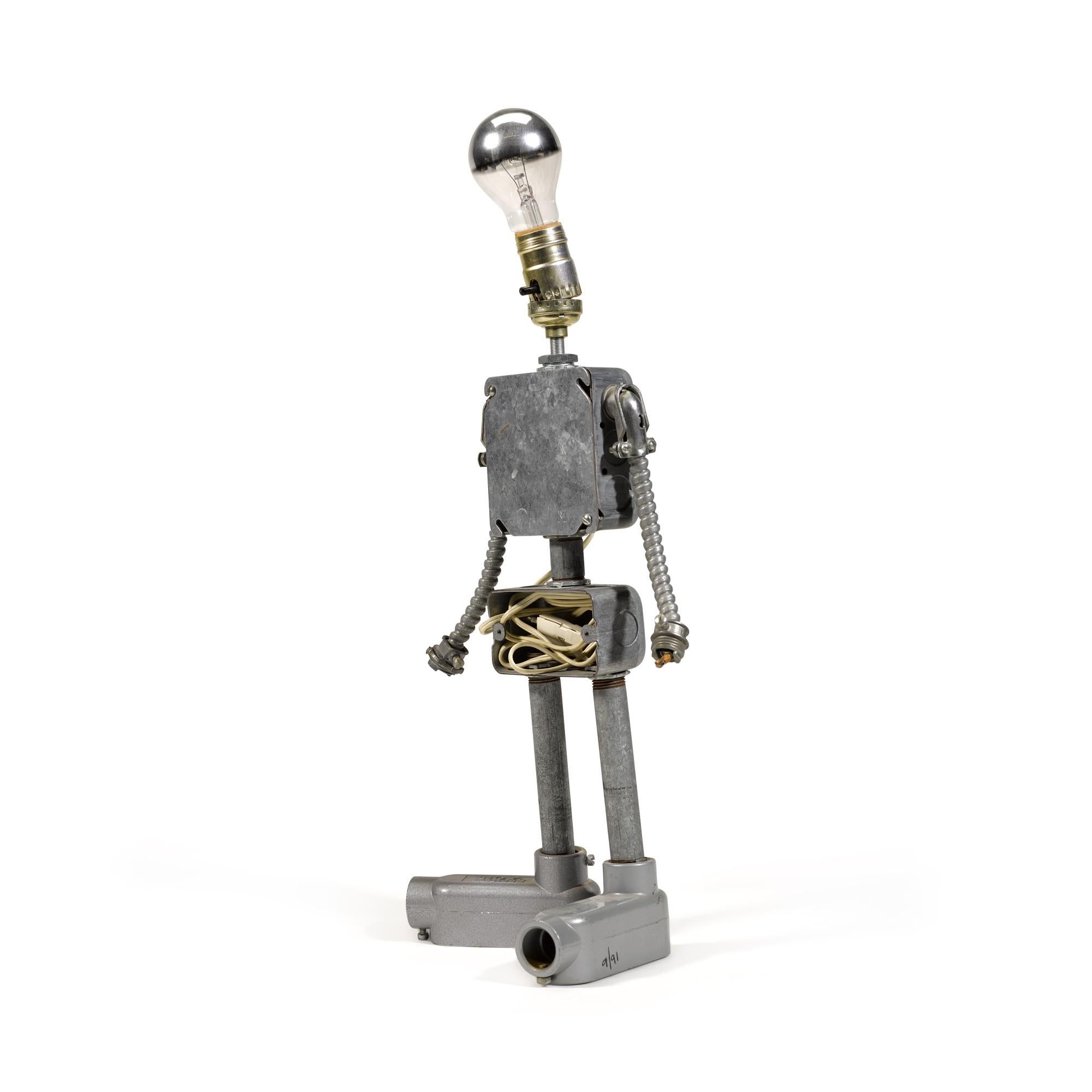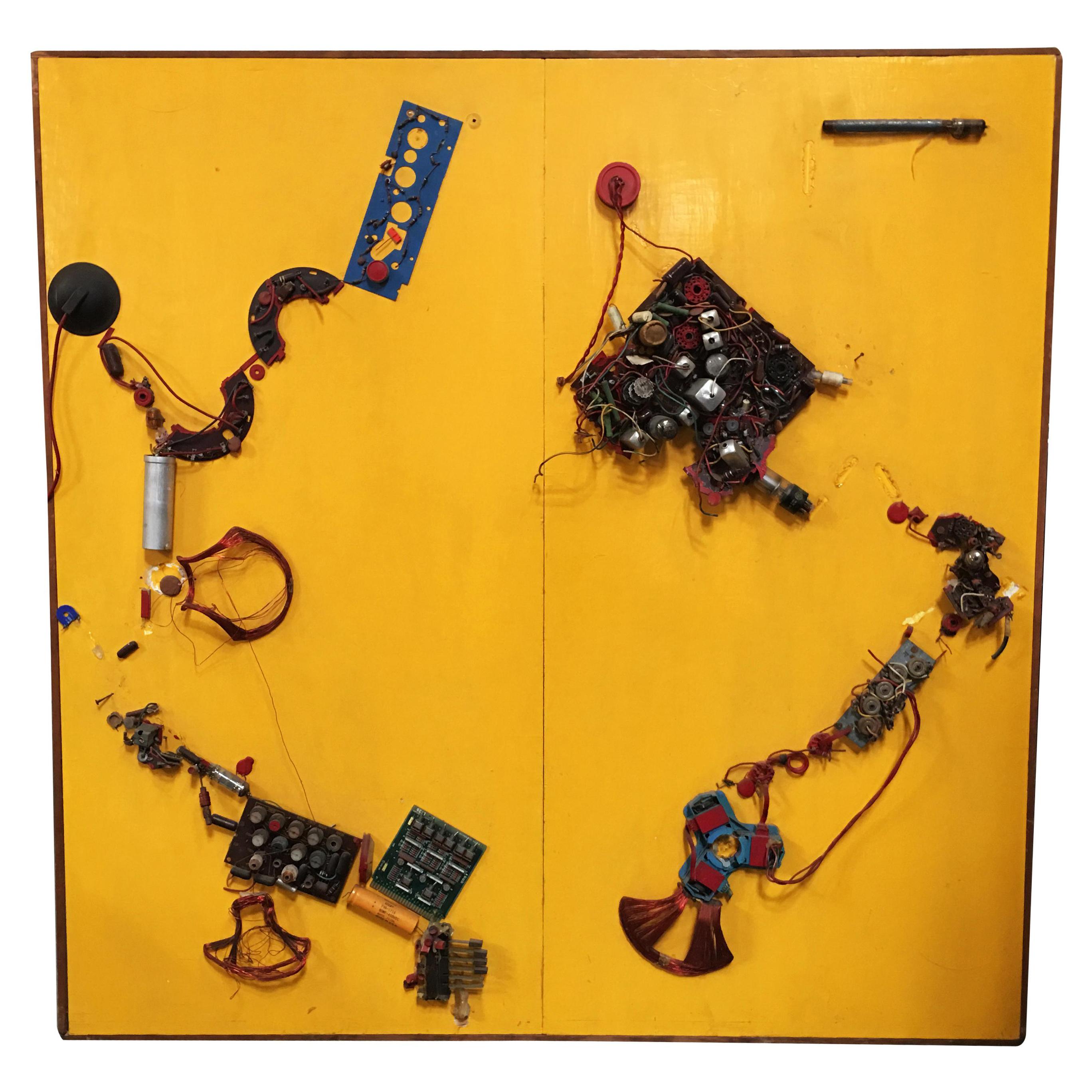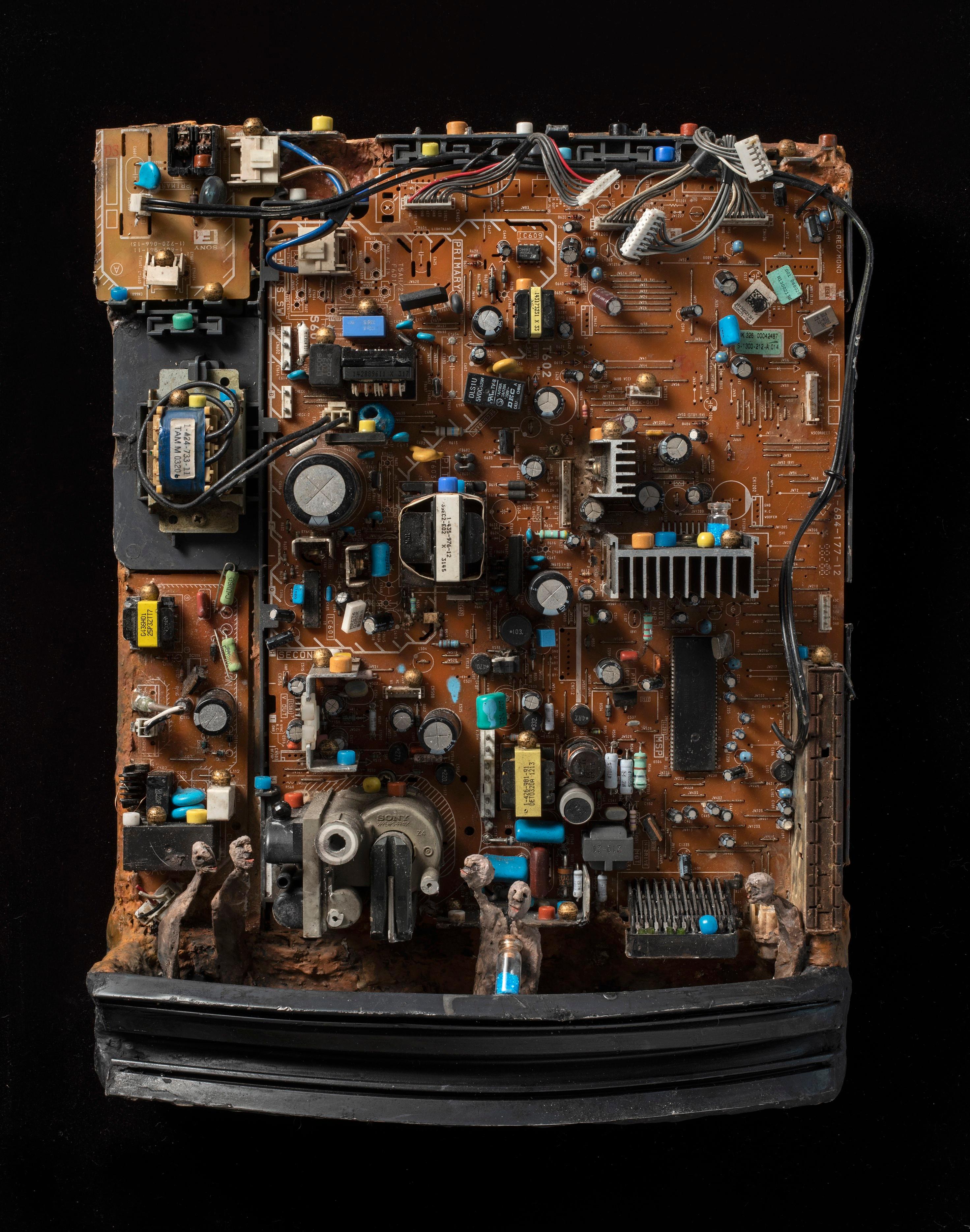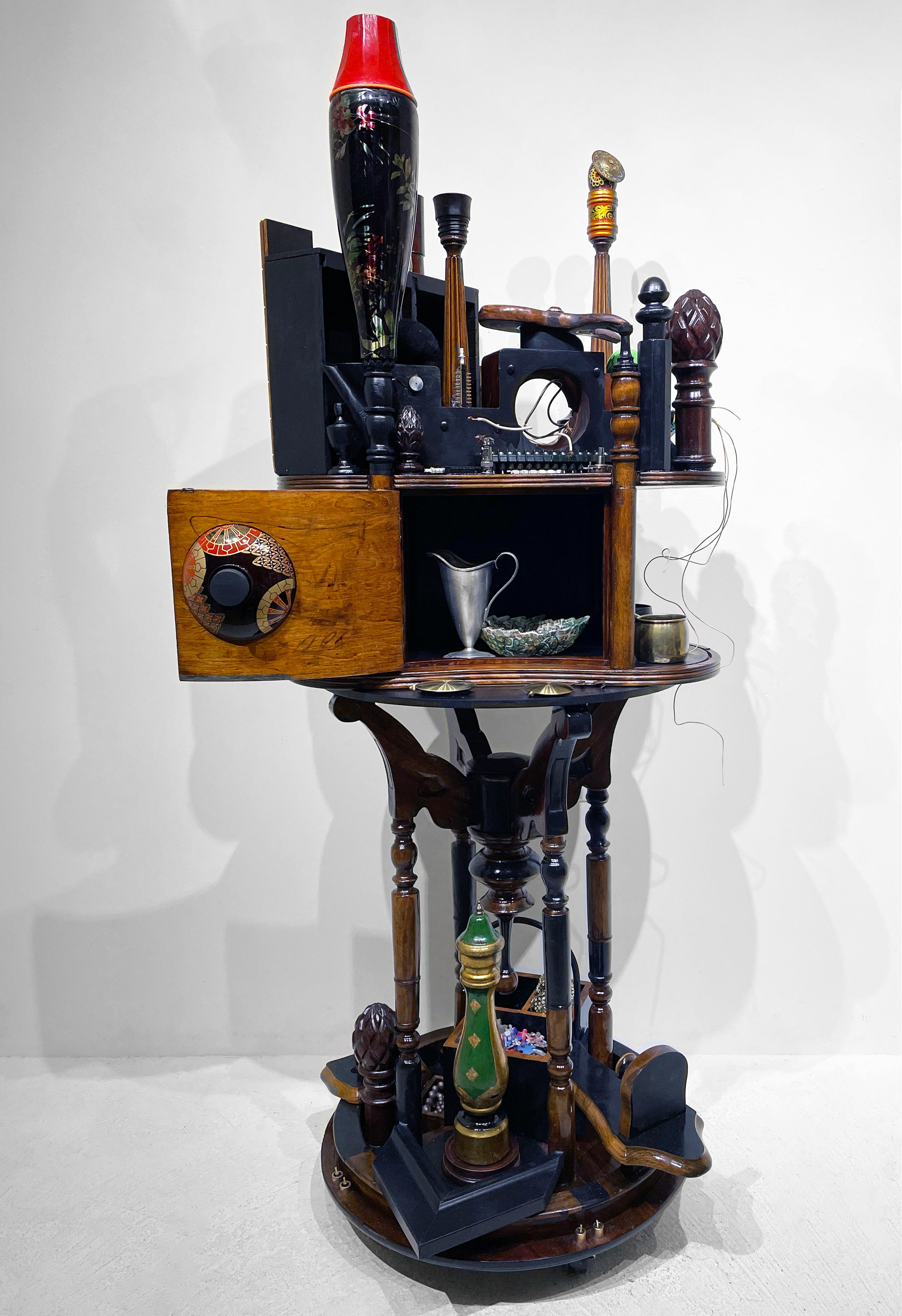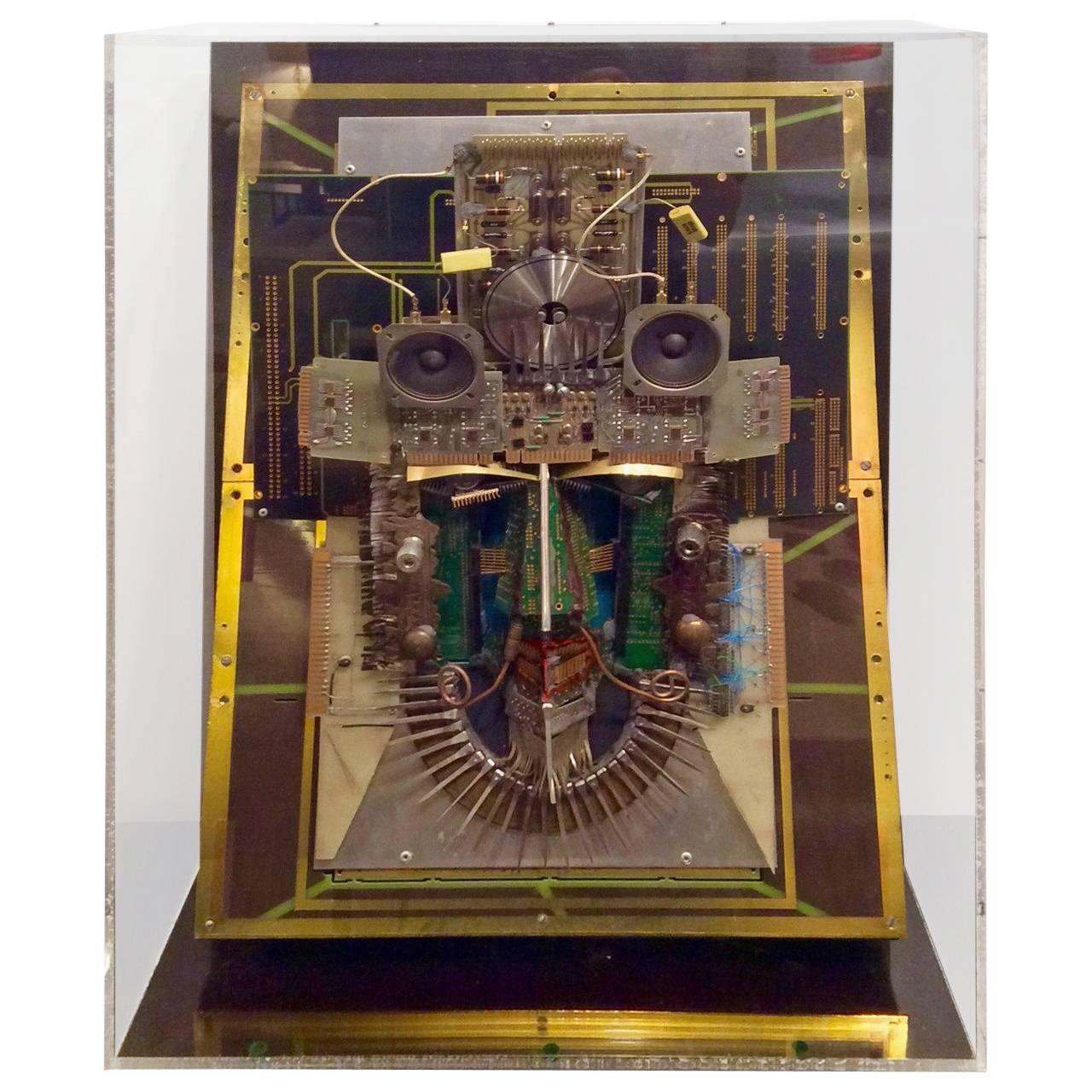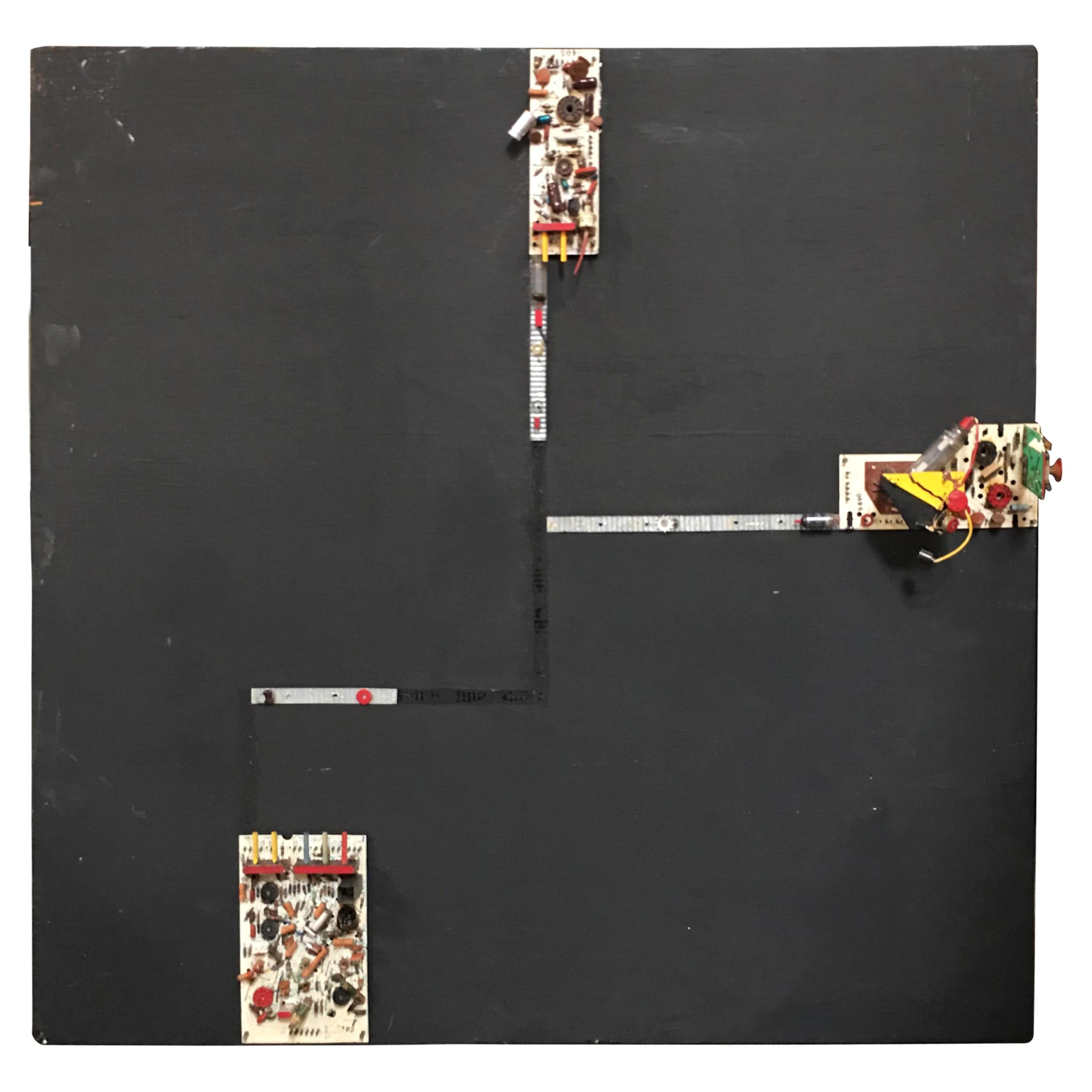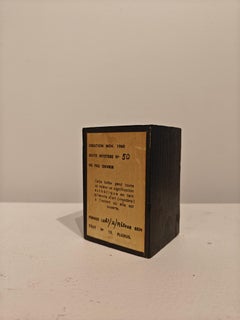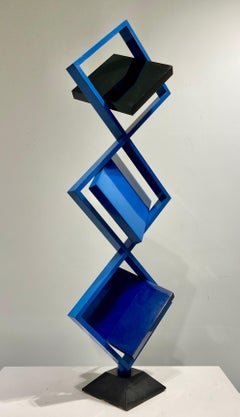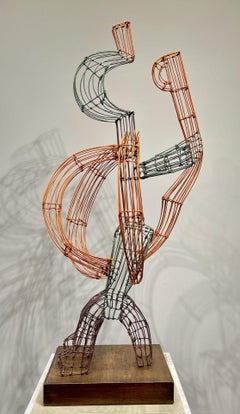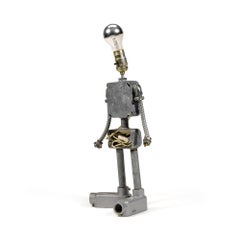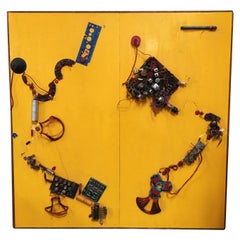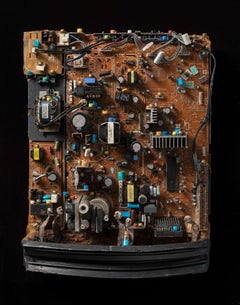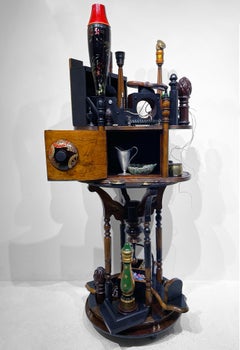Objekte ähnlich wie „ Happy New Year“ Nam June Paik und Charlotte Moorman, Fluxus Electric Sculpture, Electric Sculpture
Möchten Sie mehr Bilder oder Videos?
Zusätzliche Bilder oder Videos von dem*der Anbieter*in anfordern
1 von 6
Nam June Paik„ Happy New Year“ Nam June Paik und Charlotte Moorman, Fluxus Electric Sculpture, Electric Sculpturecirca 1970
circa 1970
3.082,86 €
Angaben zum Objekt
Nam June Paik and Charlotte Moorman
Happy New Year, circa 1970
Signed by both artists
Electronic circuit board
8 1/4 x 9 1/4 x 1 1/4 inches
Nam June Paik (1932–2006), internationally recognized as the "Father of Video Art," created a large body of work including video sculptures, installations, performances, videotapes and television productions. He had a global presence and influence, and his innovative art and visionary ideas continue to inspire a new generation of artists.
Born in 1932 in Seoul, Korea, to a wealthy industrial family, Paik and his family fled Korea in 1950 at the outset of the Korean War, first to Hong Kong, then to Japan. Paik graduated from the University of Tokyo in 1956, and then traveled to Germany to pursue his interest in avant-garde music, composition and performance. There he met John Cage and George Maciunas and became a member of the neo-dada Fluxus movement. In 1963, Paik had his legendary one-artist exhibition at the Galerie Parnass in Wuppertal, Germany, that featured his prepared television sets, which radically altered the look and content of television.
After immigrating to the United States in 1964, he settled in New York City where he expanded his engagement with video and television, and had exhibitions of his work at the New School, Galerie Bonino and the Howard Wise Gallery. In 1965, Paik was one of the first artists to use a portable video camcorder. In 1969, he worked with the Japanese engineer Shuya Abe to construct an early video-synthesizer that allowed Paik to combine and manipulate images from different sources. The Paik-Abe video synthesizer transformed electronic moving-image making. Paik invented a new artistic medium with television and video, creating an astonishing range of artworks, from his seminal videotape Global Groove (1973) that broke new ground, to his sculptures TV Buddha (1974), and TV Cello (1971); to installations such as TV Garden (1974), Video Fish (1975) and Fin de Siecle II (1989); videotapes Living with the Living Theatre (1989) and Guadalcanal Requiem (1977/1979); and global satellite television productions such as Good Morning Mr. Orwell, which broadcast from the Centre Pompidou in Paris and a WNET-TV studio in New York City Jan. 1, 1984.
Paik has been the subject of numerous exhibitions, including two major retrospectives, and has been featured in major international art exhibitions including Documenta, the Venice Biennale and the Whitney Biennial. The Nam June Paik Art Center opened in a suburb of Seoul, South Korea, in 2008.
Charlotte Moorman was an American cellist and performance artist who was a strong driving force for avant-garde music; she was dubbed the ‘Jean d’Arc of new music’ by composer Edgar Varese. In 1963, Moorman founded the Annual Avant Garde Festival in New York, which she directed for two decades.
Moorman frequently collaborated with Korean Nam June Paik over a decades-long period who was known as the ‘father of video art’. Paik created some works specifically with Moorman in mind including TV Bra for Living Sculpture (1969) and TV-Cello (1971).
Following Moorman’s death from breast cancer in 1991, Paik made a film entitled Topless Cellist (1995) about her life and avant-garde performances. Moorman also collaborated with other Fluxus artists including Carolee Schneemann, Joseph Beuys, Takehisa Kosugi and Jim McWilliams (Sky Kiss, 1968-1980).
- Schöpfer*in:Nam June Paik (1932 - 2006, Amerikanisch, Koreanisch)
- Entstehungsjahr:circa 1970
- Maße:Höhe: 20,96 cm (8,25 in)Breite: 23,5 cm (9,25 in)Tiefe: 3,18 cm (1,25 in)
- Medium:
- Bewegung und Stil:
- Zeitalter:
- Zustand:
- Galeriestandort:New York, NY
- Referenznummer:1stDibs: LU1841216061362
Anbieterinformationen
5,0
Platin-Anbieter*in
Premium-Anbieter*innen mit einer Bewertung über 4,7 und 24 Stunden Reaktionszeit
Gründungsjahr 2022
1stDibs-Anbieter*in seit 2022
117 Verkäufe auf 1stDibs
Typische Antwortzeit: <1 Stunde
- VersandAngebot wird abgerufen …Versand von: New York, NY
- Rückgabebedingungen
Einige Inhalte dieser Seite wurden automatisch übersetzt. Daher kann 1stDibs nicht die Richtigkeit der Übersetzungen garantieren. Englisch ist die Standardsprache dieser Website.
Authentizitätsgarantie
Im unwahrscheinlichen Fall eines Problems mit der Echtheit eines Objekts kontaktieren Sie uns bitte innerhalb von 1 Jahr für eine volle Rückerstattung. DetailsGeld-Zurück-Garantie
Wenn Ihr Objekt nicht der Beschreibung entspricht, beim Transport beschädigt wurde oder nicht ankommt, kontaktieren Sie uns bitte innerhalb von 7 Tagen für eine vollständige Rückerstattung. DetailsStornierung innerhalb von 24 Stunden
Sie können Ihren Kauf jederzeit innerhalb von 24 Stunden stornieren, ohne jegliche Gründe dafür angeben zu müssen.Geprüfte Anbieter*innen
Unsere Anbieter*innen unterliegen strengen Dienstleistungs- und Qualitätsstandards, wodurch wir die Seriosität unserer Angebote gewährleisten können.Preisgarantie
Wenn Sie feststellen, dass ein*e Anbieter*in dasselbe Objekt anderswo zu einem niedrigeren Preis anbietet, werden wir den Preis entsprechend anpassen.Zuverlässige weltweite Lieferung
Unsere erstklassigen Versandunternehmen bieten spezielle Versandoptionen weltweit, einschließlich individueller Lieferung.Mehr von diesem*dieser Anbieter*in
Alle anzeigen"Geheimnisvolle Schachtel (Boîte mystère)" Ben Vautier, Fluxus-Bewegung Konzeptuelle Skulptur
Von Ben Vautier
Ben Vautier
Mystery Box (Boîte mystère), 1965
Painted wood with letterpress label
3 13/16 × 2 3/4 × 2 7/16 inches
Ben Vautier was a French artist known for his text-based paintings...
Kategorie
1960er, Konzeptionell, Abstrakte Skulpturen
Materialien
Holz, Papier
„Secret Santa“ Takako Saito, Fluxus-Bewegung, Konzeptuelle Konstruktion, Skulptur
Takako Saito
Secret Santa , 1965
Stamped inscribed in pen recipients name
Wood construction
1 1/2 x 1 1/4 x 1 1/4 inches
Takako Saito is a Japanese artist closely associated with F...
Kategorie
1960er, Konzeptionell, Abstrakte Skulpturen
Materialien
Holz
"Kinetische Skulptur" Roger Phillips, 1985 Rotierende blaue konstruktivistische Skulptur
Von Roger Phillips
Roger Phillips
Kinetische Skulptur
Lackiertes Eisen und Aluminium auf Sockel aus Nussbaumholz
44 1/2 Zoll hoch x 13 Zoll breit x 7 3/4 Zoll tief
oger Phillips wurde 1930 in New Yor...
Kategorie
1980er, Konstruktivismus, Abstrakte Skulpturen
Materialien
Emaille, Eisen
7.046 € Angebotspreis
20 % Rabatt
„Hitch Hiked“ Hayward Oubre, bemalte Drahtskulptur, schwarzer Künstler
Hayward Oubre
Per Anhalter unterwegs, 1960
Signiert auf der Basis: OUBRE 60
Skulptur aus bemaltem Draht
45 H. x 21 B. x 19 T. Zoll
Provenienz:
Nachlass des Künstlers
Hayward Louis ...
Kategorie
1960er, Figurative Skulpturen
Materialien
Draht
"Monument 8" Calvin Marcus, Gemischte Medienkonstruktion Zeitgenössische Skulptur
Calvin Marcus
Denkmal 8, 2018
Holz, Glas, Heißkleber, Karton, Kunststoff, Papiermasse, Schwefel, Asche, Gesso, Cel-Vinyl, Flash, Aquarell und andere Medien Skulptur
22" hoch x 13 1/4...
Kategorie
2010er, Zeitgenössisch, Figurative Skulpturen
Materialien
Glas, Kunststoff, Holz, Papier, Kleber, Mixed Media, Wasserfarbe, Pappe
Calvin Marcus"Monument 8" Calvin Marcus, Gemischte Medienkonstruktion Zeitgenössische Skulptur, 2018
8.455 € Angebotspreis
20 % Rabatt
„Moon“ Ray Johnson, Minimalistische Mixed Media auf Masonit, Fluxus-Bewegung
Von Ray Johnson
Ray Johnson
Mond
Gemischte Medien auf Masonit
8 3/4 x 6 1/2 Zoll
Ray Johnson, der einst als "berühmtester unbekannter Künstler New Yorks" bezeichnet wurde, war ein renommierter Sch...
Kategorie
1960er, Konzeptionell, Mixed Media
Materialien
Masonit, Mixed Media
Das könnte Ihnen auch gefallen
Roboter
Von Nam June Paik
Multiple aus gemischtem Metall mit Glühbirne, 1990, signiert in schwarzer Tinte, datiert, nummeriert aus einer Auflage von 91 Unikaten, herausgegeben von der Edition Mönchehaus-Museu...
Kategorie
1990er, Moderne, Figurative Skulpturen
Materialien
Metall
21.687 €
Abstrakte abstrakte „Radio Tronics“ Artographie Lrg Mixed Media-Skulptur von Pasqual Bettio
Von Pasqual Bettio
Artografie Wandskulptur mit dem Titel "Radio Tronics" Artografie Wandskulptur von Pasqual Bettio. Bio Senior Senator a.D. J. Pasqual Bettio F.R.P.S. begann seine künstlerische Karrie...
Kategorie
Vintage, 1980er, amerikanisch, Wandskulpturen
Materialien
Holz
Wandskulptur aus der Art brut: „Electric Factory“
Von Gerard Cambon
Gérard Cambon wurde 1960 in Toulouse (Frankreich) geboren.
Er hat einen Abschluss in Politikwissenschaften und ist Autodidakt in der Kunst.
In den ersten Jahren seines Lebens experi...
Kategorie
2010er, Art brut, Figurative Skulpturen
Materialien
Metall
Linda Stein, Favorites 1232 – Zeitgenössische Kunst-Skulptur in Mischtechnik
Diese Arbeit aus Linda Steins Serie Displacement From Home greift auf die Tradition der Wunderkammern zurück, um die globale Vertreibung und die traumat...
Kategorie
2010er, Zeitgenössisch, Abstrakte Skulpturen
Materialien
Metall
31.709 € Angebotspreis
20 % Rabatt
Einzigartige Skulptur alter Computerteile von George Dergalis aus dem Jahr 1988
Von George Dergalis
Eine signierte, ziemlich einzigartige Wandskulptur, die aus alten Computerchips und -geräten besteht. Sie ist in einem Lucite-Rahmen untergebracht. Sie ist auf 1988 datiert.
Es fehle...
Kategorie
Vintage, 1980er, amerikanisch, Wandskulpturen
Abstrakte abstrakte Skulptur „Meine erste Tronik“ in Mischtechnik von Pasqual Bettio
Von Pasqual Bettio
Artografie-Wandskulptur mit dem Titel "My first Tronic" Artografie-Wandskulptur von Pasqual Bettio.
Bio
Senior Senator a.D. J. Pasqual Bettio F.R.P.S. begann seine künstlerische ...
Kategorie
Vintage, 1980er, amerikanisch, Wandskulpturen
Materialien
Holz
